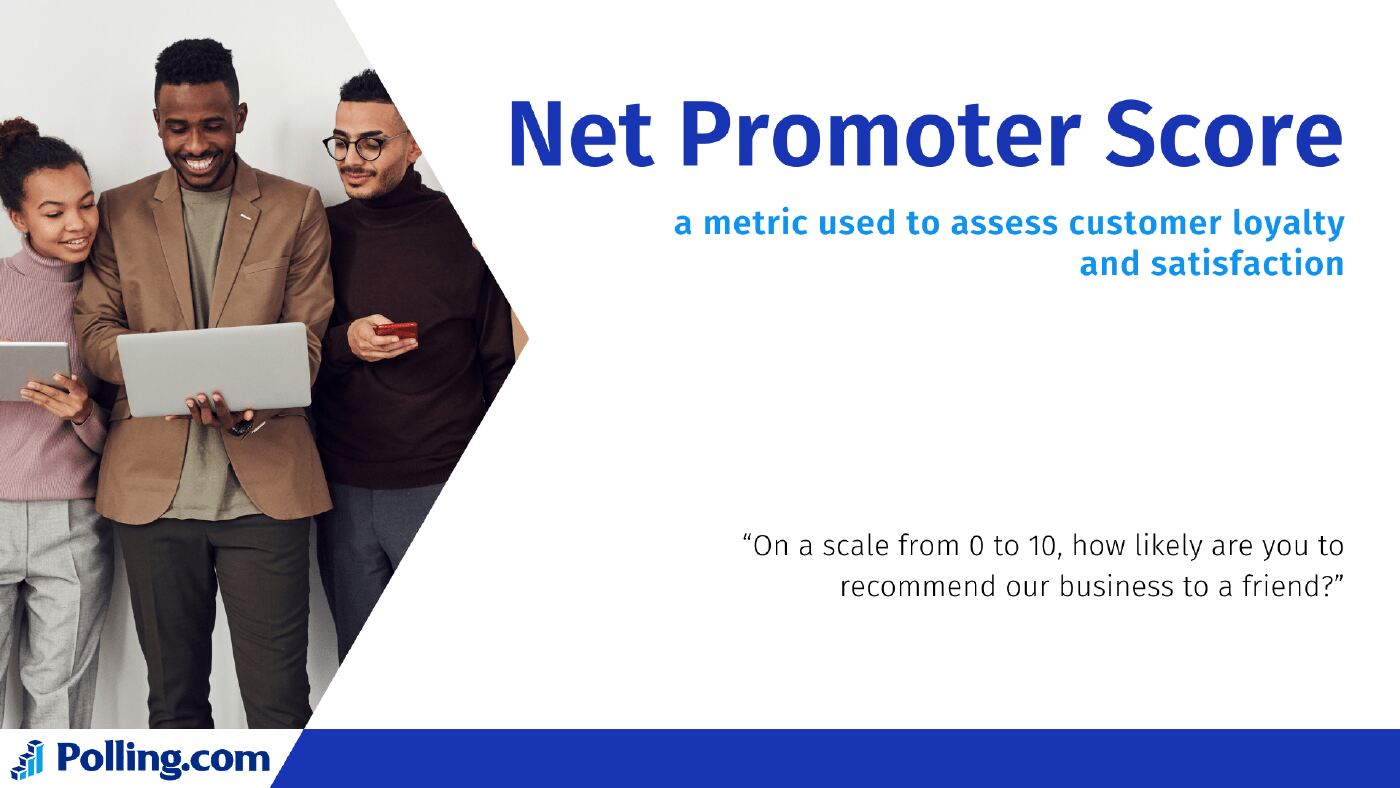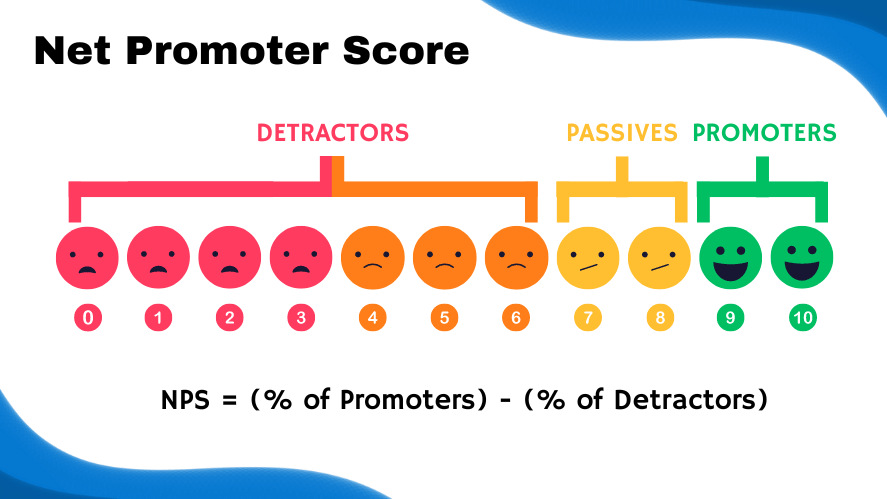
Net Promoter Score (NPS) Strategies, Insights, and Industry Benchmarks
In today’s fiercely competitive market, understanding and measuring customer satisfaction isn’t just beneficial; it’s a critical determinant of a company’s future success and growth potential. The Net Promoter Score (NPS) stands out as a beacon for businesses aiming to gauge customer loyalty and satisfaction.
It simplifies the complex landscape of customer emotions into actionable data, making it a favorite among marketers, customer success teams, and executives alike.
What is NPS?
NPS is a straightforward yet powerful metric that gauges customer satisfaction and loyalty. It categorizes customers into three groups based on their likelihood to recommend a company’s products or services:
- Detractors (0-6): Unhappy customers who can spread negative word-of-mouth.
- Passives (7-8): Satisfied but indifferent customers who could be swayed by competitors.
- Promoters (9-10): Loyal customers who are likely to recommend your business.
Why Does NPS Matter?
Net Promoter Score is a crucial metric for businesses due to its unique ability to measure customer sentiment.
Here are key reasons why NPS is so valuable:
- Simplicity: A single number provides immediate insight into customer loyalty, making it easy to understand and act upon.
- Predictive Power: There’s a high correlation between NPS and growth metrics such as retention and revenue, indicating its reliability as a growth predictor.
NPS transcends the traditional metrics of customer satisfaction by providing a lens through which businesses can view their customer relationships through the eyes of loyalty and advocacy.
This perspective is invaluable because it correlates directly with a company’s growth prospects.
A high NPS indicates a healthy, loyal customer base, while a low score may signal underlying issues that need attention to prevent negative impacts on the business’s future.
The NPS Spectrum
Exploring the Net Promoter Score (NPS) spectrum means understanding the roles of Detractors, Passives, and Promoters within your customer base. Each group impacts your business in unique ways, from posing challenges to offering growth opportunities.
Let’s take a closer look at these segments and how they contribute to the overall picture of customer loyalty and satisfaction.
Detractors
- Significance: Can damage brand reputation through negative word-of-mouth.
- Focus: Address their concerns promptly to improve their experience and potentially convert them into Promoters.
Passives
- Significance: They don’t actively harm but don’t promote your brand either.
- Focus: Enhance their experience to shift them towards becoming Promoters.
Promoters
- Significance: Drive positive word-of-mouth, contributing to growth.
- Focus: Maintain high-quality standards and exceed expectations to keep them satisfied and advocating for your brand.
Special Types of NPS
Beyond the traditional NPS, there are specialized variations like Relative NPS (RNPS) and Transactional NPS (TNPS) that provide additional layers of insight into customer sentiment and loyalty.
Understanding these metrics can offer more nuanced views of your company’s performance and opportunities for improvement.
Relative NPS (RNPS)
- Significance: Offers a benchmark by comparing your NPS against industry standards.
- Focus: Understand your position in the market relative to competitors.
Transactional NPS (TNPS)
- Significance: Captures immediate post-transaction feedback.
- Focus: Enables quick action on customer feedback to improve experiences.
The NPS Formula
How to Calculate NPS?
The formula to calculate NPS is deceptively simple: subtract the percentage of Detractors from the percentage of Promoters.
This number can range from -100 (all Detractors) to +100 (all Promoters), offering a clear and concise metric for assessing customer loyalty and predicting business growth.

Understanding your customers’ loyalty and satisfaction is key to your business success.
You can try and use the NPS Calculator below to quickly and easily determine your Net Promoter Score and gain insights into your customer relationships.
NPS Calculator
Let's visualize conducting an NPS survey with 100 participants yielding the following responses:
- Promoters: 70
- Passives: 20
- Detractors: 10
To calculate your NPS: subtract the percentage of Detractors (10%) from the percentage of Promoters (70%), resulting in an NPS of 60. This impressive score suggests a robust loyalty foundation within your customer base.
What is a Good NPS Score?
The true value of NPS extends beyond mere numbers; it serves as a catalyst for deeper exploration into the reasons behind customer classifications as Detractors or Promoters. This insight is crucial for formulating targeted strategies aimed at boosting overall customer satisfaction and loyalty.
Defining a "good" NPS score is industry-specific. In general terms, any score above 0 is favorable, indicating a prevalence of Promoters over Detractors and, by extension, positive customer loyalty. Scores exceeding 50 are exemplary, denoting a solid foundation of customer advocates and high loyalty levels.
NPS Strategies
Elevating your NPS requires a deep commitment to refining operations and nurturing a culture that prioritizes ongoing customer feedback.

By making strategic adjustments based on this feedback, businesses can significantly improve the customer journey. Key initiatives include:
- Operational Adjustments: Tailor your business operations to meet and exceed customer expectations based on their feedback.
- Feedback Mechanisms: Implement comprehensive systems to gather and act on customer insights.
- Employee Training: Equip your staff with the necessary skills to deliver exceptional customer service, informed by real customer needs and preferences.
Navigating NPS Across Diverse Industries
The Net Promoter Score (NPS) has cemented its position as a vital metric for gauging customer loyalty and satisfaction across various sectors.
However, the value of an NPS cannot be universally applied without considering the unique landscape of each industry. This diversity necessitates a deeper understanding of industry-specific benchmarks and context to accurately interpret and act upon NPS data.
Here’s how businesses in different sectors can navigate their NPS journey, setting realistic expectations and goals based on a nuanced understanding of their industry standards.
Recognizing Industry-Specific NPS Benchmarks
NPS benchmarks vary significantly across industries due to differing customer expectations and experiences.
For instance, the hospitality industry, known for its direct customer service, often sees higher NPS scores compared to sectors like utilities or telecommunications, where customer interactions may be less frequent or more transactional.
Understanding these benchmarks is crucial for setting realistic goals for NPS improvement and for contextualizing your score within the broader industry landscape.
- Service Industries: Typically exhibit higher NPS benchmarks, reflecting the direct, personal interaction between service providers and customers.
- Product-Centric Industries: May have lower NPS benchmarks, as customer satisfaction is often tied to product performance and value rather than service encounters.
- B2B vs. B2C Contexts: B2B companies might experience different NPS dynamics compared to B2C counterparts, with relationships and service reliability playing a more significant role.
Applying Context to Your NPS Strategy
Understanding the context behind your NPS involves more than just knowing the numbers. It requires an analysis of what drives customer loyalty and satisfaction within your industry and how your business can leverage these insights to enhance customer experiences.
- Customer Expectations: Delve into the specific expectations customers have from businesses in your sector. High expectations can lead to lower NPS scores if not met, even with good service.
- Competitive Landscape: Your NPS should also be viewed through the lens of the competitive landscape. Being above industry average is good, but leading in NPS can be a significant competitive advantage.
- Evolving Trends: Industry benchmarks are not static; they evolve with changing customer preferences and technological advancements. Keeping a pulse on these trends is essential for maintaining and improving your NPS.
Strategic Action Based on Industry Benchmarks
Once you have a clear understanding of the benchmarks and context, the next step is to tailor your strategies to address the unique challenges and opportunities within your industry.
- Benchmarking Against Peers: Use industry-specific NPS data to benchmark your performance against peers, identifying areas of strength and opportunities for improvement.
- Customized Improvement Initiatives: Design NPS improvement initiatives that resonate with your industry’s specific challenges, whether it's enhancing product features, improving customer service, or innovating new solutions.
- Continuous Monitoring: Industry benchmarks should serve as a guide for continuous NPS monitoring. Regularly measuring your score against these benchmarks helps track progress and adjust strategies as needed.
Navigating NPS across diverse industries requires a strategic approach grounded in understanding industry-specific benchmarks and context. By recognizing the unique landscape of your sector and applying these insights to your NPS strategy, your business can set realistic goals, drive meaningful improvements, and ultimately enhance customer loyalty and satisfaction.
NPS Pros & Cons
Pros:
- Simplicity and Clarity: A single NPS figure can quickly inform you about your company's health in terms of customer satisfaction.
- Predictive Value: Studies have shown a strong correlation between high NPS scores and business growth metrics, such as retention rates and revenue expansion.
Cons:
- Lacks Specificity: While NPS tells you how many customers are unhappy, it doesn't tell you why.
- Not a Standalone Metric: For a comprehensive understanding, NPS should be complemented with other qualitative and quantitative feedback mechanisms.
Final Thoughts
NPS is a powerful tool in the quest for customer loyalty and business growth. By understanding its nuances, leveraging real-world success stories, and applying industry-specific strategies, businesses can turn NPS data into actionable insights that drive meaningful improvements in customer experience and, ultimately, business success.
